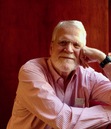Mark Scott Smith's Blog: Enemy in the Mirror, page 63
November 7, 2019
Taiwan Strait Tension
Although U.S. policy in early 1950 was not directly poised to prevent a Communist Chinese invasion of the Nationalist Chinese stronghold on Taiwan, the outbreak of the Korean War changed the equation.
On June 27, 1950, the United States Seventh Fleet sailed into the Taiwan Strait to prevent the Korean conflict from spreading south.
The appearance of the Seventh Fleet caused the Chinese Communists to transfer troops poised for an invasion of Taiwan to the northern border of Korea.
Source: Milestones: 1953–1960 – Office of the Historian

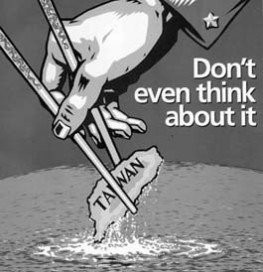 Association for Diplomatic Studies & Training
Association for Diplomatic Studies & TrainingOn 27 June 1950, President Truman issued the following statement:
The attack upon Korea makes it plain beyond all doubt that communism has passed beyond the use of subversion to conquer independent nations and will now use armed invasion and war. It has defied the orders of the Security Council of the United Nations issued to preserve international peace and security. In these circumstances the occupation of Formosa by Communist forces would be a direct threat to the security of the Pacific area and to United States forces performing their lawful and necessary functions in that area. Accordingly, I have ordered the 7th Fleet to prevent any attack on Formosa. As a corollary of this action, I am calling upon the Chinese Government on Formosa to cease all air and sea operations against the mainland. The 7th Fleet will see that this is done. The determination of the future status of Formosa must await the restoration of security in the Pacific, a peace settlement with Japan, or consideration by the United Nations.
The post Taiwan Strait Tension appeared first on Enemy in the Mirror.
November 4, 2019
Truman Report: Korean War
President Truman’s June 1950 report to the nation, although laced with Cold War assumptions and righteous/patriotic jargon, seemed forthright and accurate regarding the status of the war in Korea.
The post Truman Report: Korean War appeared first on Enemy in the Mirror.
October 31, 2019
INVASION OF SOUTH KOREA
On June 25, 1950 ~ 90,000 soldiers of the Korean People’s Army (KPA), well-trained and equipped with modern tanks, trucks, artillery and small arms by the USSR, crossed the 38th parallel in eight divisions and an armored brigade to invade South Korea.
The 98,000-man Republic of Korea Army (ROK) was incompletely-trained and under-equipped with no tanks, inadequate artillery and few aircraft.
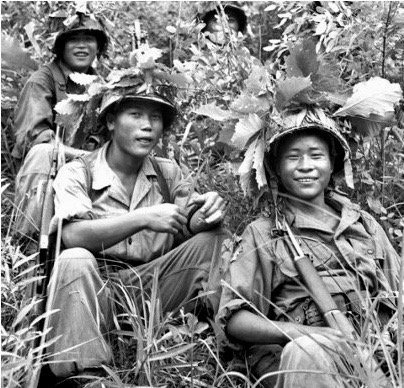 Frank Praytor @ Stars & Stripes
Frank Praytor @ Stars & Stripes
Aided only by a 500-man U.S. Korean Military Advisory Group (KMAG), the ROK army was quickly overwhelmed as the KPA advanced rapidly toward Seoul.
 CBS News
CBS NewsThe post INVASION OF SOUTH KOREA appeared first on Enemy in the Mirror.
October 28, 2019
Eve of Korean War
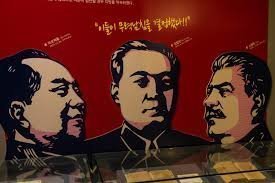 researchgate.net
researchgate.netThe breakup of the Soviet Union in the early 1990s opened previously-closed archives that contained information on Soviet-North Korean-Chinese
relations during the Cold War—of particular interest, correspondence between Josef Stalin, Mao Zedong and Kim Il Sung.
______________________________________________________________________________
SOURCE: Neglected Questions on the “Forgotten War”: South Korea and the United States on the Eve of the Korean War

It is well known that South Korean President
Syngman Rhee equaled his North Korean
counterpart’s ambitions to use military force to
reunite his homeland, and that the United
States was determined to prevent his doing so
on his own.
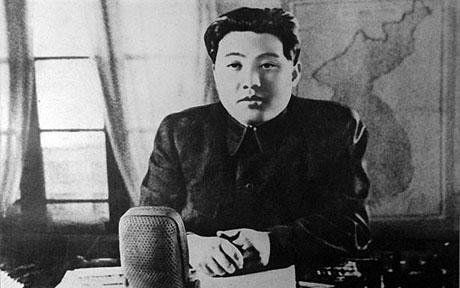 Photo by Richard Jones
Photo by Richard Jones
Contrary to traditional views that charged Stalin with
initiating plans for North Korea’s southern
attack, the documents portray Kim Il Sung as
eager to initiate war with South Korea and
Stalin as reluctant to give Kim the green light
to attack. The war’s origins are thus rooted in
Korean nationalist sentiment rather than as
part of a Soviet-led global communist
revolution.
 Britannica
BritannicaThe documents also suggest that
Stalin offered Kim his blessing to attack
sometime in late 1949, but cautioned that the
Soviet Union would not participate beyond
supplying North Korea with weapons. As a
precautionary step he urged the North Korean
leader to approach Mao for any further
assistance he needed.

For an excellent discussion of the issues on the eve of the Korean War, read this article from the Asia-Pacific Journal:
The post Eve of Korean War appeared first on Enemy in the Mirror.
October 24, 2019
Dean Acheson ~ Pacific Defense
In January 1950 U.S. Secretary of State Dean Acheson gave a speech to the National Press Club intended to outline the Pacific defense posture of the United States.
He named Japan and the Philippines in the U.S. defense plan, but did not explicitly include Korea or the Republic of China on Taiwan.
He further mentioned: “so far as the military security of other areas in the Pacific is concerned, it must be clear that no person can guarantee these areas against military attack.”
In January 1950 , the U.S. Congress rejected a $60 million aid bill for South Korea.
Some observers regarded Acheson’s January 12, 1950 speech before the National Press Club to mean that the United States support for the government of South Korea was limited—suggesting the U.S. would not intervene if North Korea (assisted by the USSR) invaded the South.
Soviet archives first opened in the 1980s however, found that the speech had little if any impact on Communist deliberations.
 New York Times, April 26,1995
New York Times, April 26,1995The post Dean Acheson ~ Pacific Defense appeared first on Enemy in the Mirror.
October 21, 2019
The Martian Chronicles
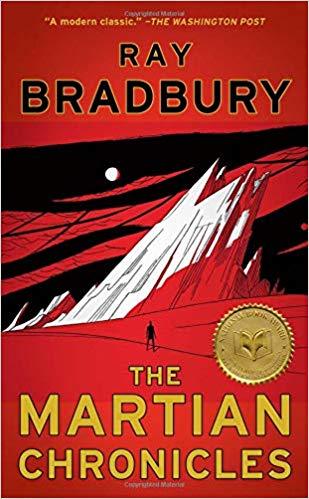
The Martian Chronicles was published in 1950 by Ray Bradbury as a series of 27 connected short stories about humans fleeing a devastated earth to colonize Mars where they conflict with aboriginal Martians.
In 1980 NBC produced the book as a television miniseries starring Rock Hudson, Darren McGavin, Bernadette Peters, Roddy McDowall, Fritz Weaver, Barry Morse, and Maria Schell.
The post The Martian Chronicles appeared first on Enemy in the Mirror.
October 17, 2019
Kim Il-sung pre-Korean War
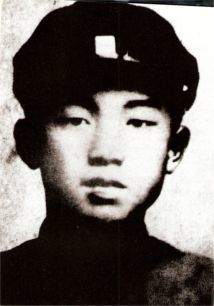 Kim Il-sung
Kim Il-sungKim Il-sung’s life Before the Korean War
Kim Il-sung’s life has been greatly mythologized by North Korean historians. After reviewing the literature (including Kim’s autobiography Reminiscences: With the Century) and interviewing Korean historians on my recent trip to Seoul and Vladivostok, here is my take on the actual life of the North Korean dictator Kim Il Sung leading up to the onset of the Korean War:
Kim was born as Kim Sŏng-ju into a Presbyterian family in a village near Pyongyang Korea in 1912 Some consider the name he later assumed (Kim Il-sung) had previously been used by a prominent early leader of the Korean resistance named Kim Kyung-cheonBecause of relative famine and Kim’s father’s involvement in anti-Japanese activities, the family moved to Manchuria in 1920 Kim attended middle school in China’s Jilin province until 1930 when he was jailed for underground Marxist activities Along with other Koreans, Kim joined the Chinese-led Northeast Anti-Japanese United Army (NEAJUA) in 1935 Kim was a bona fide resistance fighter, but not the main leader of anti-Japanese forces in Manchuria Sometime after 1935, Kim assumed the name Kim Il-sung (Back row, 3rd from left ) in 1938 in command of theSixth Division of the Second Directional Army in Jilin, China
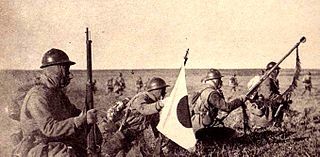 Japanese forces in Manchuria – Alchetron The Japanese, considering Kim an effective guerrilla leader, put a price on his head and labelled him “Tiger” In 1940, along with other Korean guerrillas, Kim escaped the increasingly-effective Japanese search and destroy forces by crossing the Amur River into the Primorsky Krai region of the Soviet Union
Japanese forces in Manchuria – Alchetron The Japanese, considering Kim an effective guerrilla leader, put a price on his head and labelled him “Tiger” In 1940, along with other Korean guerrillas, Kim escaped the increasingly-effective Japanese search and destroy forces by crossing the Amur River into the Primorsky Krai region of the Soviet Union Because Joseph Stalin had banished ethnic Koreans living in the area to central Asia in the 1930s, Koreans were not welcome in urban areas of Vladivostok and Khabarovsk at that time
Because Joseph Stalin had banished ethnic Koreans living in the area to central Asia in the 1930s, Koreans were not welcome in urban areas of Vladivostok and Khabarovsk at that time Kim and his troops were sent to the small town of Vyatskoye, 70 km north of Khabarovsk where they received indoctrination in Soviet Communist ideology and further military trainingAdditionally, the Soviets used Koreans fluent in Japanese for intelligence purposes—Kim Il Sung was fluent in Korean, Chinese and Japanese

 Vyatskoye Russia
Vyatskoye Russia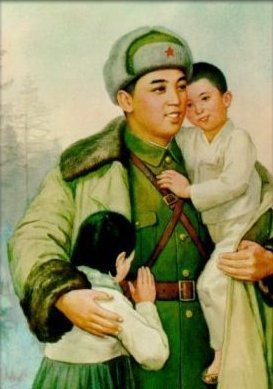 Kim Il-sungIn 1942 Kim was appointed a Captain in the 88th Special Rifle Brigade of the Soviet ArmyComposed of three Chinese and one Korean batallion, the 88th Special Rifle Brigade was under the command of a Zhou Baozhong, former leader of the NEAJUAThe Korean Battalion of the 88th may have made some cross-border raids into Manchuria for reconnaissance and intelligence gathering from 1942-45, but the USSR was not at war with Japan at that time and Kim was not involved in any major engagements with Japanese military then
Kim Il-sungIn 1942 Kim was appointed a Captain in the 88th Special Rifle Brigade of the Soviet ArmyComposed of three Chinese and one Korean batallion, the 88th Special Rifle Brigade was under the command of a Zhou Baozhong, former leader of the NEAJUAThe Korean Battalion of the 88th may have made some cross-border raids into Manchuria for reconnaissance and intelligence gathering from 1942-45, but the USSR was not at war with Japan at that time and Kim was not involved in any major engagements with Japanese military then Kim Il-sung 1945The Soviets groomed Kim for leadership in postwar North Korea and sent him back by ship from Vladivostok in the fall of 1945 (the official North Korean story is that he remained in Manchuria leading the resistance against Imperial Japan until the end the war)
Kim Il-sung 1945The Soviets groomed Kim for leadership in postwar North Korea and sent him back by ship from Vladivostok in the fall of 1945 (the official North Korean story is that he remained in Manchuria leading the resistance against Imperial Japan until the end the war) Korean People’s Army – Wikipedia Kim aligned with the Communist Party of Korea and, along with a cadre of former anti-Japanese fighters, established the Korean People’s Army (KPA) with Soviet advisors and equipment Prior to the North Korean invasion of the South in 1950, the USSR equipped the KPA with modern, medium tanks, trucks, artillery, small arms and attack aircraft Later, North Korean pilots were sent to secret bases in the Soviet Union and China to train in MiG-15 jet aircraft Unlike South Korea, whose military was restricted by American policy, North Korean forces were well-trained and equipped at the start of the Korean War in June 1950
Korean People’s Army – Wikipedia Kim aligned with the Communist Party of Korea and, along with a cadre of former anti-Japanese fighters, established the Korean People’s Army (KPA) with Soviet advisors and equipment Prior to the North Korean invasion of the South in 1950, the USSR equipped the KPA with modern, medium tanks, trucks, artillery, small arms and attack aircraft Later, North Korean pilots were sent to secret bases in the Soviet Union and China to train in MiG-15 jet aircraft Unlike South Korea, whose military was restricted by American policy, North Korean forces were well-trained and equipped at the start of the Korean War in June 1950The post Kim Il-sung pre-Korean War appeared first on Enemy in the Mirror.
October 14, 2019
Cost of Living
In 1950:
a new house cost $8,450.00the average income per year was $3,210.00a gallon of gas was 18 centsthe average cost of new car was $1,510.00A few more prices from the 50’s and how much things cost
Chrysler New Yorker $4347
1958 Chevrolet Corvette $3631
Men’s All Wool Suits $28.90
Square dance Cotton Check Dress $3.29
Electric Portable Singer Sewing Machine $19.90
Ronson Electric Shaver $28.50
Rib Roast 29 cents per pound
Ritz Crackers 32 cents
Rollaway Beds $14.95
Ring 1 carat Diamond $399.00
Mechanical Adding Machine $3.98
Source: The People History
The post Cost of Living appeared first on Enemy in the Mirror.
October 10, 2019
Arirang
This lovely, traditional Korean song is >600 years old. The refrain Ariyang… is apparently nonsensical. There are many versions of the lyrics reflecting love, loss, resistance and patriotism.
Arirang, Arirang, Arariyo…
Crossing over Arirang Pass.
The one who abandoned me
Shall not walk even 4 kilometers before their feet hurt.
Just as there are many stars in the clear sky,
There are also many dreams in our heart.
There, over there, that mountain is Baekdu Mountain,
Where, even in the middle of winter days, flowers bloom.
The tune has been sung by Korean guerrillas in Manchuria fighting Imperial Japanese forces, heart-broken patriots in Chosen (Korea) under Japanese rule and wistful, modern day Koreans North and South.
Most interesting, is that people in Imperial Japan also loved the song and recorded many versions.
Source: Arirang – Wikipedia
Arirang is revered in both North and South Korea and is a bittersweet expression of love of country. Here is a North Korean version~
Here is a modern South Korean version~
What a universal song. Even the U.S. Marines sing it!
The post Arirang appeared first on Enemy in the Mirror.
October 7, 2019
CIA Mind Control
In 1950 the director of the U.S. Central Intelligence authorized Project BLUEBIRD to discover methods of:
conditioning personnel to prevent unauthorized extraction of informationcontrol of an individual by the application of special interrogation techniquesmemory enhancementpreventing hostile control of CIA personnel
In 1951 Project Artichoke was established to determine whether a person could be involuntarily made to perform an act of attempted assassination.
Project Artichoke also studied:
hypnosisforced morphine addiction and withdrawaluse of other chemicals (including LSD) to produce amnesia and other vulnerable states
In 1953 the MKUltra project used numerous methods to manipulate people’s mental states and alter brain functions, including the surreptitious administration of drugs (especially LSD) and other chemicals, hypnosis, sensory deprivation, isolation, verbal and sexual abuse, and other forms of torture.
The post CIA Mind Control appeared first on Enemy in the Mirror.
Enemy in the Mirror
I began by posting events around the turn This website www.enemyinmirror.com explores the consciousness, diplomacy, emotion, prejudice and psychology of 20th Century America and her enemies in wartime.
I began by posting events around the turn of the 20th century as I was researching my first novel about the Pacific War. I continued through WWII for my second novel about the Battle of the Atlantic. Now I am beginning to look at the Cold War as I gather information for my next novel about the Korean War. ...more
- Mark Scott Smith's profile
- 7 followers


